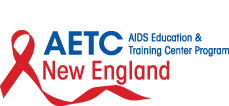%202.jpg)
Viral hepatitis is a group of infectious diseases known as hepatitis A, B, C, D, and E. These diseases affect millions of people worldwide, causing acute illness, as well as chronic – and sometimes fatal – liver disease. Globally, more than 350 million people are living with hepatitis B (HBV) or hepatitis C (HCV), according to the World Health Organization (WHO). The vast majority of these persons are unaware they are infected. The organization estimates that viral hepatitis causes an estimated 1.1 million deaths each year worldwide.
WHO is calling on all countries to work together to eliminate viral hepatitis as a public health threat by 2030. The theme for World Hepatitis Day is “I Can’t Wait” – which expresses the urgent need to raise awareness and take action to meet this goal.
To help you, your patients or clients, and at-risk communities prepare for and mark the day, we’ve compiled an annotated list of online resources focusing on viral hepatitis, with particular emphasis on HBV and HCV.
CDC Educational Campaign and Fact Sheets
Know More Hepatitis – This is a national, theory-driven, multi-media education campaign designed to help implement CDC’s recommendation that all adults get tested for HCV. The goal of the campaign is to reduce the morbidity and mortality associated with HCV by increasing testing so people who are infected can be linked to effective care and treatment. The campaign website includes links to HCV fact sheets for patients, provider tools and resources, and campaign materials, including posters, social media content and graphics, radio scripts and sample emails, email signatures, and digital badges.
CDC fact sheets include:
- The ABCs of Hepatitis – for Health Professionals
- Hepatitis B Questions and Answers (Q&As) for the Public
- Hepatitis B Q&As for Health Professionals
- Hepatitis B Vaccination of Infants, Children, and Adolescents
- Hepatitis B Vaccination of Adults
- Hepatitis C Q&As for the Public
- Hepatitis C Q&As for Health Professionals
- Testing Recommendations for Hepatitis C Virus Infection
- Beyond Baby Boomers: Hepatitis C Now Heavily Impacting Multiple Generations
- Blood Safety Basics (includes information about viral hepatitis)
Viral Hepatitis in the United States
Viral Hepatitis Surveillance Report: United States, 2019 (CDC) – This report provides the latest full-year surveillance data for HCV, hepatitis B, and hepatitis A. The surveillance report includes details on recent trends in acute and chronic cases of viral hepatitis, with breakdowns by age, sex, race/ethnicity, and risk category.
Vital Signs: Dramatic Increases in Hepatitis C (CDC) – This illustrated fact sheet focuses particularly on the recent rise in cases of acute hepatitis, the multigenerational impact of the virus, and CDC’s recommendation that all adults be tested for HCV.
Health Care-Associated Hepatitis B and C Outbreaks: 2008-2019 (CDC) – This resource page includes extensive information on recent outbreaks of HBV, HCV, or both that were related to healthcare and reported to CDC. An associated table summarizes available information about each event, including the outbreak year, location, setting, number of outbreak-associated infections, number of persons notified for screening, and the known or suspected mode of transmission.
Strategic Plans and Reports
Viral Hepatitis National Strategic Plan: A Roadmap to Elimination for the United States: 2021-2025. (U.S. Department of Health and Human Services) – This strategic plan presents a five-year framework for the U.S. response to hepatitis A, B, and C, with the overriding goals of eliminating viral hepatitis as a public health threat in the U.S. by 2030.
Division of Viral Hepatitis 2025 Strategic Plan (CDC Division of Viral Hepatitis – DVH) – This plan outlines DVH’s four viral hepatitis goals for 2025: reducing new viral hepatitis infections; reducing viral hepatitis-related morbidity and mortality; reducing viral hepatitis-related disparities; and establishing comprehensive national viral hepatitis surveillance.
2021 National Viral Hepatitis Progress Report (CDC) – This report and an associated fact sheet provide an update on U.S. efforts to prevent viral hepatitis infections and eliminate disease and deaths caused by hepatitis A, B, and C.
Other Educational Resources
Hepatitis C Online (University of Washington and CDC) – This free educational website has sections on HCV’s biology and life cycle, HCV medications, and an online course that addresses the diagnosis, monitoring, and management of HCV infection.
Fundamentals of Liver Disease: Hepatitis C 2.0 (American Association for the Study of Liver Diseases – AASLD) – This online course has modules on a range of topics, including: HCV epidemiology and screening; newly diagnosed patients; assessing the severity of liver disease; management of chronic HCV, including in patients with comorbid and other conditions; antiviral treatments for HCV infection; management of patients who have achieved a virological “cure”; and pediatric patients with chronic HCV.
Fundamentals of Liver Disease: Hepatitis B 2.0 (AASLD) – This online resource has modules about HBV epidemiology and screening; HBV-positive patients; natural history of HBV and treatment candidates; management of chronic HBV in patients with other comorbid conditions; antiviral treatments for HBV infection; prevention of HBV infection; and HBV in pediatric patients.
HCVGuidelines.org (AASLD and Infectious Diseases Society of America) – These Guidelines are divided into four main sections: testing, evaluation, and monitoring of HCV; initial treatment of HCV infection; retreatment of persons in whom prior therapy has failed; and management of unique and key populations.
World Health Organization Guidelines on Treatment of Hepatitis C Virus Infection: Best Practice Advice From the American College of Physicians (Annals of Internal Medicine) – This guidance is designed to help providers simplify and improve treatment of patients diagnosed with chronic HCV. It includes specific guidance on treatment for patients with and without cirrhosis, as well as laboratory monitoring for patients receiving treatment.
HIV and Hepatitis C Co-infection (New England AIDS Education and Training Center) – This page in NEAETC’s Online Resource Library includes curated resources on HIV-HCV co-infection, including fact sheets, infographics, issue briefs, guidelines, curricula, toolkits, and other educational materials.

